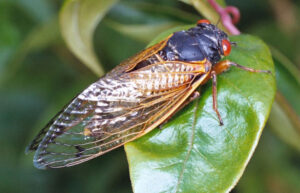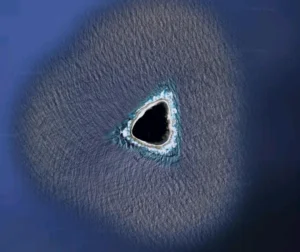For the northern hemisphere, the annual Orionids meteor shower will peak in the late hours of Wednesday, October 20, and into the morning of October 21.
Although this year’s Orionids peak activity coincides with a glaringly full Hunter’s Moon, there is a chance that you’ll be able to see the spectacle. The shower should reach its apex near 2 a.m. EDT on Thursday, October 21. Look in the direction of the constellation Orion.
Here’s how you can view the astronomical event from your part of the world and what you might expect given variable conditions.
Viewing the Orionids meteor shower

Orionids meteor shower from Slovakia. Photo Majo Chudy/Shutterstock
Although most visible to the Northern Hemisphere, the meteor shower can be seen virtually anywhere on Earth.
Conditions
Visibility will depend on a couple of local variables: light pollution and cloud coverage.
If you live in a mid-to-large urban area but want to see the shower clearly, make your exit to the closest dark-sky spot outside the city. Dark-sky designated areas are always your best bet when viewing astronomical events like the Orionids — mass lighting is a notorious diluter.
The full moon will also pose an unusual challenge, making finding a dim, rural spot all the more critical. According to Space.com:
While the bright light of the full moon may be unavoidable, stargazers should find a viewing spot away from city lights, with little light pollution, for the best possible chance of seeing the meteor shower. Otherwise, you need no special equipment or skills — just allow your eyes time to adjust to the darkness to ensure you don’t miss any of the meteors that may pass overhead.
Celestial position
The Orionids are so named due to their origin, or “radiant point,” near the constellation Orion. Stargazers can find Orion by locating its bright star, Betelgeuse. You can confirm that a meteor is from the Orionids shower by tracing the tail back to its approximate radiant point. If the tail’s trajectory points to a spot just north of Betelgeuse, you have an Orionid.
For additional resources, head to the American Meteor Society’s October Activity Outlook, which provides detailed information like celestial position charts, meteor fall rates by the hour, and meteor velocity. The NASA Meteor Shower Portal allows visitors to track meteoric activity across different regions and can be a valuable resource for night-sky enthusiasts.
A journey through space and time: the Orionids and Halley’s Comet

Halley’s Comet, 1986. Photo: Brian Donovan/Shutterstock
Though often referred to as a “shooting star,” a meteor isn’t a star at all — it’s space junk left in the wake of a comet. The Orionids originate from one of today’s best-known comets: Halley’s.
Around this time every year, our planet drifts through the rocky, icy debris left behind by Halley’s Comet, which is why we know to expect the Orionids meteor shower each October. According to EarthSky.org:
This comet leaves debris in its wake that strikes Earth’s atmosphere most fully around October 20-22, while Earth intersects the comet’s orbit, as it does every year at this time. Particles shed by the comet slam into our upper atmosphere, where they vaporize at some 100km above Earth’s surface.
Halley’s Comet coincides with Earth’s orbit only once every 75-76 years. The famous comet last appeared to us Earthlings in 1986, which puts Halley’s next appearance around late July 2061.
Fun fact: It wasn’t until the late 1980s that aeronautical technology was advanced enough to interact with Halley’s Comet. And in 1986, space and governmental agencies from Western Europe, the Soviet Union, and Japan formed the Halley Armada, an international space fleet. Over the course of several probing missions, the Halley Armada met and examined Halley’s Comet during its brief foray across the firmament.






